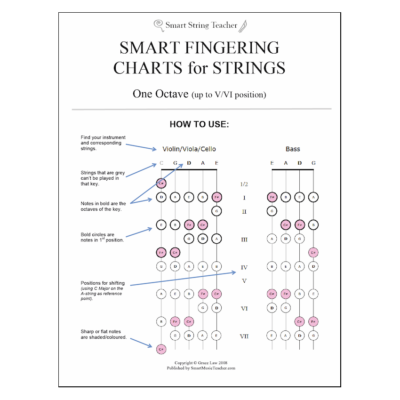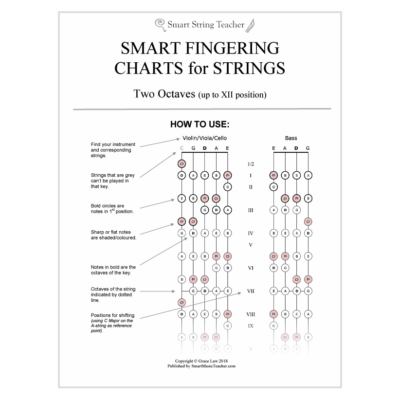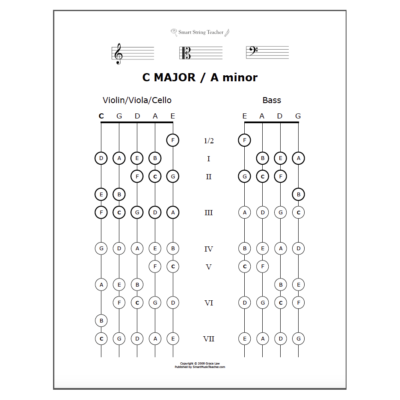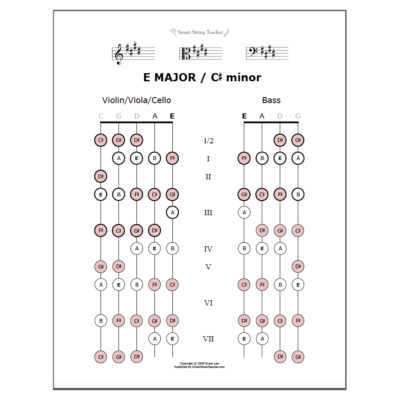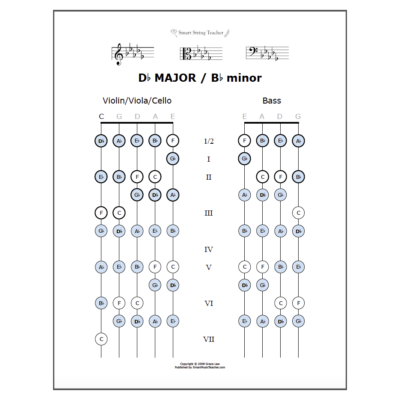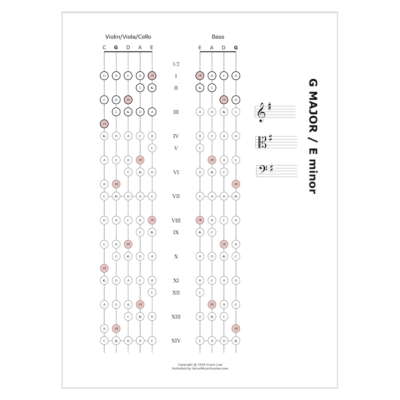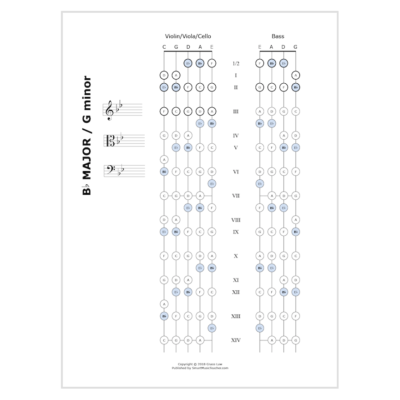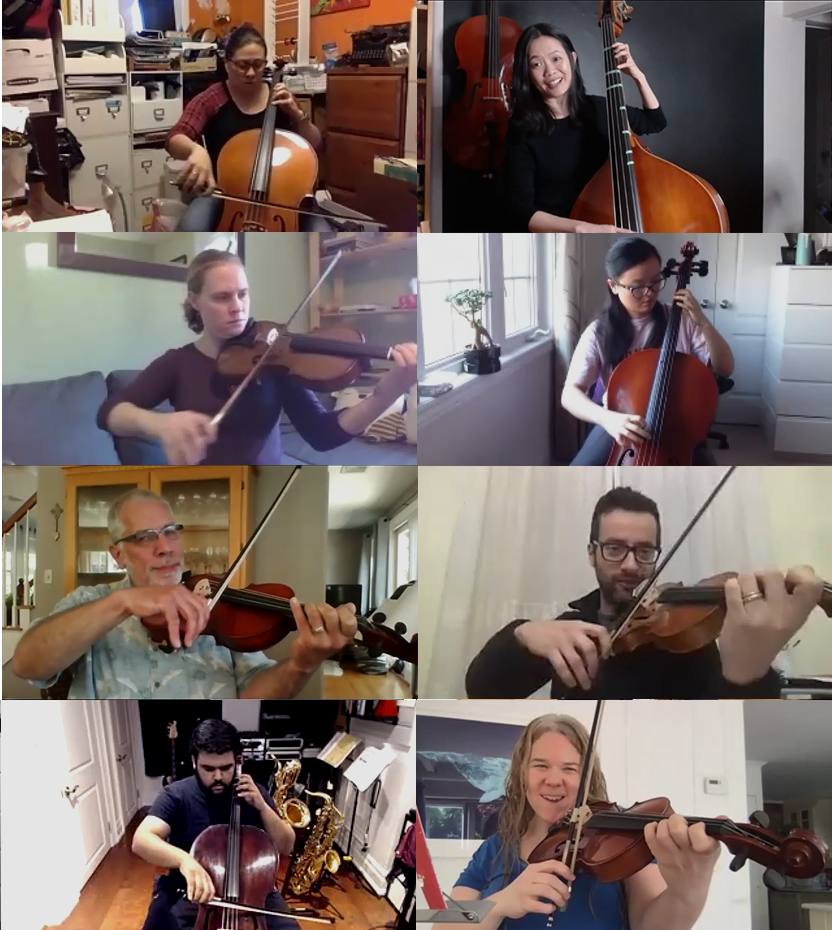Smart String Teacher’s Smart Fingering Charts for Strings is a must-have for your intermediate to advanced violin, viola, cello or bass students, and yourself! A good set of fingering charts should be an essential part of a string player’s resources. As one student says, “These fingering charts take the mystery out of shifting!”
Choose One-Octave (up to V/VI position) for the intermediate student.
Choose Two-Octaves (up to XII position) for the advanced student.
See First Position Fingering Charts for beginner players.
This is a downloadable product. You will need a PDF reader such as Adobe Reader to read and print.
IMPORTANT: All copies will be personalized with the owner’s name. Upon checkout, please enter the name you want to appear on all copies.
What do I need to know about the SST Copyright & License Agreement before purchasing?
One Octave Fingering Charts
Add to Cart $8 – Student/Individual CopyAdd to Cart $150 – School/Studio License
Two Octave Fingering Charts
Add to Cart $8 – Personal Copy (Individual License)Add to Cart $150 – School/Studio License
Features:
- Can be used universally by violin, viola, cello or bass.
- Represents the fingerboard to scale.
- Displays the key signature in all clefs.
- First position is clearly highlighted in bold.
- Positions are marked for easy orientation.
- Fingering charts for up to 6 flats and 6 sharps.
- Clear and easy to read.
- Can be used to support any scale method.
- Choose the 1 octave version for intermediate students playing up to V or VI position.
- Choose the 2 octave version for advanced students playing VII position and above.
String Players Need Fingering Charts
In my years as a violin student, as a private teacher, and as a classroom teacher, I have never seen anyone use fingering charts, much less provide them to their students. Even in scale methods, fingering charts are rarely provided, at least not past 1st position, or are often not very good ones. As a student, both in school and private lessons, it was never once suggested to me to look up the fingering on a chart. How is it that fingering charts, which are common for wind instruments, are somehow not even used as a resource for string students, who have the unenviable challenge of trying to find their notes in the ‘uncharted’ territory called the fingerboard?
When I began teaching string orchestra, I faced the challenge, as all string teachers do, of trying to address the fingering needs of four different instruments. Many days, I wished I had a fingering chart that I could just tell the kids to look up. I searched for fingering charts to use in class, but none filled my expectations; they were either incomplete in some way, or just too overwhelming to use.
Universal Fingering Charts for the Classroom
At the time, I was also developing my method, Teaching Fingering, Shifting and Intonation Without Fear, intended to make fingering, and therefore intonation, super easy to teach (yes, I mean super). One day I realized I could build on that and create a set of fingering charts that was actually universal to violin, viola, cello and (flipped for) bass. All I had to do was combine all 5 strings and BINGO – I had a universal set of fingering charts for (almost) all the keys! (Don’t you just love those rare times when you only have to copy one set of something for the whole class instead of one set each for violin, viola, cello and bass?)
Easy to Use
These charts are very easy to use, especially if you teach by finger pattern, and reinforce it by using Smart Scales for Strings. Use this terminology to make fingering SUPER easy to teach, learn and understand. You can also take your students to the stratosphere with SSS’s, Single String Scales (post coming soon), my easy method for introducing the higher positions.
This set of fingering charts has been a life saver for me. My students keep them in their folders and use them all the time. I print them on coloured paper so they can find them easily. They seem to be working well enough because now that I think of it, after a brief explanation on how to use it, students seem to be able to figure out many fingerings without my help.
These fingering charts have even helped me on many occasions to figure out fingering in higher positions on instruments that are not my main instrument, such as cello and bass. I always model how to use the charts to my students so they understand how to figure out fingerings for themselves.
I hope you enjoy using Smart Fingering Charts for Strings, and I hope you are following my Teaching Fingering, Shifting and Intonation Without Fear posts.


